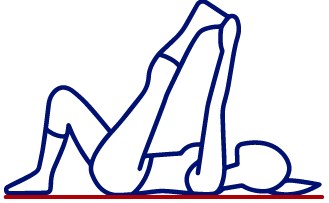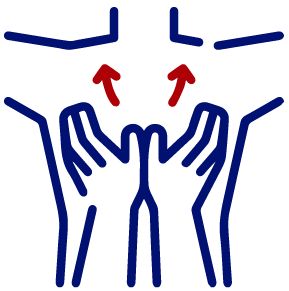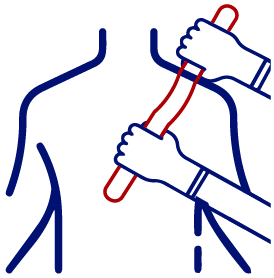
What Is Shoulder Pain?
Shoulder pain is a common issue that can affect people of all ages and backgrounds. It can range from mild to severe and may be acute or chronic. Understanding the symptoms and causes of shoulder pain is essential for effective management. It can be caused by various factors and have a significant impact on your daily life. The following is dedicated to exploring the condition of shoulder pain, its symptoms, diagnostic methods, causes, risk factors, and a range of treatment options to help you find relief and improve your shoulder health.
What Are The Symptoms Of Shoulder Pain?
Recognizing the symptoms of shoulder pain is fundamental to understanding and addressing underlying issues. Here’s an overview of common symptoms associated with shoulder pain:
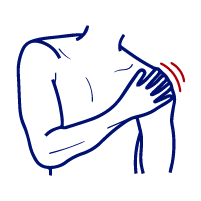
Dull Ache
A persistent, low-level ache in the shoulder area.

Sharp Pain
Sudden, intense pain when moving the shoulder.
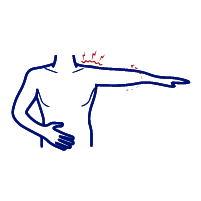
Limited Range of Motion
Difficulty raising your arm, reaching, or rotating your shoulder.
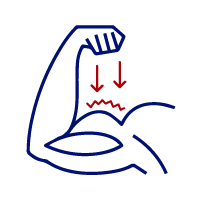
Weakness
Reduced strength in the affected arm.
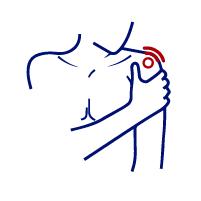
Tingling/Numbness
Sensations like pins and needles in the shoulder or down the arm.
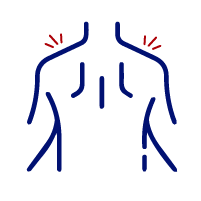
Stiffness
Difficulty in moving the shoulder joint, often worse in the morning.
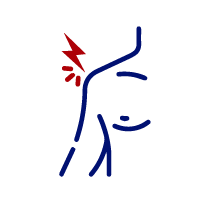
Clicking or Popping
Audible or palpable sensations when moving the shoulder.
Causes And Risk Factors
What Are The Causes?
The causes of shoulder pain are diverse, often involving specific injuries and conditions. Each presents unique challenges that necessitate tailored approaches for relief and recovery.
- Rotator Cuff Injuries: Tears or inflammation in the rotator cuff tendons.
- Tendinitis: Inflammation of the tendons.
- Frozen Shoulder (Adhesive Capsulitis): Stiffness and restricted movement.
- Arthritis: Degeneration of the shoulder joint.
- Bursitis: Inflammation of the bursa sac in the shoulder.
- Fractures and Dislocations: Broken bones or dislocated joints.
What Are The Risk Factors
Identifying the risk factors associated with shoulder pain is essential for preemptive measures. These factors play pivotal roles in determining the likelihood of developing shoulder issues.
- Poor Posture: Research has shown that an increase in the thoracic curve (hyperkyphosis) is associated with shoulder pain.
- Age: The risk increases with age.
- Occupation: Jobs that involve repetitive or overhead movements, heavy lifting, and/or prolonged postural strain. Even the “hunched” position of a desk job can be a risk factor.
- Sports and Activities: Engaging in sports or activities that stress the shoulder.
- Poor form with workouts at the gym: We see numerous patients who injure themselves by pushing it too hard in the gym or using poor form. Some exercises alone are a risk versus reward question that is unique to each person.
How Is Shoulder Pain Diagnosed?
Diagnosing the underlying cause of shoulder pain is crucial for effective treatment. Orthopedic testing and medical assessments play a key role. The following is a list of just a few orthopedic tests that can be used to begin the diagnostic process:
- Orthopedic Tests: Orthopedic tests, performed by specialists, assess the shoulder’s structure and function to identify specific issues contributing to pain.
-
- Neer Test
- Hawkins-Kennedy Test
- Drop Arm Test
- Speed’s Test
- Yergason’s Test
- Lift-Off Test (Gerber’s Test)
- External Rotation Resistance Test (ER3 Test)
- Empty Can Test (Jobe Test)
- Physical Examination: A comprehensive evaluation of the shoulder’s range of motion, strength, and tenderness
- X-rays: To detect bone abnormalities and joint issues.
- Magnetic Resonance Imaging(MRI): Detailed images of soft tissues, including muscles, tendons, and ligaments.
- Ultrasound: Imaging of the shoulder’s soft tissues for detecting inflammation or tears.

How Can We Treat Shoulder Pain?
There are several treatment options to manage shoulder pain, depending on the cause and severity:
Discover the Ultimate Relief and Recovery Experience
With Highlands Family Chiropractic! Rely on our exceptional expertise for Myofascial Pain Syndrome Treatment.


